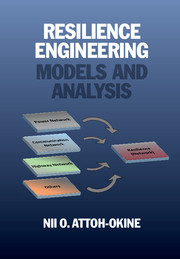1 - Introduction
from PART I - INTRODUCTION
Published online by Cambridge University Press: 05 March 2016
Summary
Introduction
Prelude
The fundamental ideas about sustainability can be summarized as follows: a sustainable system is one that survives or persists both during normal performance and in an extreme event. Nevertheless this has given rise to other questions, including the following: (1) What system or subsystem or characteristics of systems persist? (2) For how long? (3) When do I find out if the system or subsystem or characteristic persisted? Sustainability and sustainable development have been used interchangeably, but sustainable development is the mother concept that ties the three goals of humanity (entitlement to health, wealth, and justice) in one unique concept (O'Riordan and Voisey 1997). Sustainability has been generally associated with the definition by the World Commission on Environment and Development (1987) as development that meets the needs of the present without compromising the ability of future generations to meet their own needs. The concept applies to the integrated system comprising humans and nature (Cabezas et al. 2004). Although the term “sustainability” was originally framed in terms of famine and overpopulation, it has gradually been transferred to ecosystems and natural resources (Marshall and Toffel 2005). This has given rise to more than 100 definitions of sustainability. Therefore, the multiple definitions of sustainability may have rendered the term meaningless (Elkington, undated).
Gibson (2001) presented the following principles of sustainability:
• Human-ecological systems integrity
• Sufficiency and opportunity
• Equity
• Efficiency and throughput reduction: reducing threats and avoiding waste
• Democracy and civility: applying to sustainability in well informed administrative principles
• Precaution: uncertainty and risks
• Immediate and long-term integration: applying principles at once
In some cases the definition can be difficult to operationalize or implement. An attempt has been made to operationalize sustainability in different forms; for example, economy refers to jobs and wealth, environment refers to environmental qualities and natural resources, and social refers to health and social development. Table 1.1 shows sustainability dimensions. Table 1.2 depicts sustainability categories.
• Furthermore, sustainable development is a complex idea that cannot be easily described or simply applied. The major key of sustainable development is that it is an intergenerational phenomenon; therefore timescale is of an essence (Martens 2006). Sustainable development has many disagreements (Kemp and Martens 2007).
Information
- Type
- Chapter
- Information
- Resilience EngineeringModels and Analysis, pp. 3 - 28Publisher: Cambridge University PressPrint publication year: 2016
